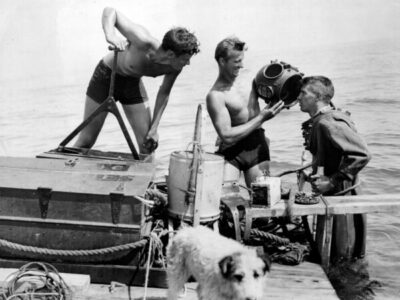
By Rebecca Thiele, Indiana Public Broadcasting
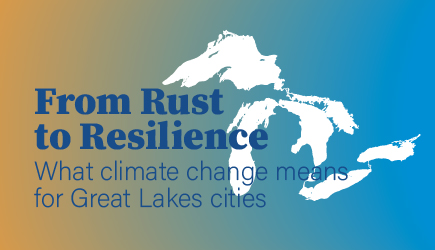
This article is part of the Pulitzer Center’s nationwide Connected Coastlines reporting initiative. For more information, go to pulitzercenter.org/connected-coastlines-initiative.
For all stories in the “From Rust to Resilience” project, including the Great Lakes Now monthly show, click HERE.
Back in the ‘90s, Nancy Schwab’s family vacation home in Beverly Shores, Indiana, wasn’t as close to Lake Michigan as it is today. She says you would burn your feet on the sand getting to the water in the summer.
“We used to have, I would say, another 100 to 150 feet of beach going far out to where the waves are starting — and many memories of being out here with the family,” Schwab says.
In past winters, Schwab says the ice on the lake used to stretch as far as the eye could see — shielding the shoreline from the harsh winter waves. This winter that icy barrier wasn’t there.
“So much as it’s nice to get those 51 degree days. When we have a 51 degree day, my heart stops because I’m like, we’re just not getting that protection anymore,” she says.
Every day the water inches closer to the road and utility lines in front of her home. Any closer and it will have no heat, no water, and her family won’t be able to reach it from the road.
“It’s very sad that it’s taken this beach that everybody enjoys,” Schwab says.
Watch this Great Lakes Now‘s segment on shrinking shorelines around the lakes:
API key not valid. Please pass a valid API key.An Entire Economy Built Around Beaches And Dunes
Erosion isn’t just affecting homeowners — it could also drive tourists away. Millions visit Indiana’s lakeshore every year. In Porter County alone, they contribute more than $350 million to the local economy annually, helping to fund everything from schools to fire departments.
The restaurant Wagner’s Ribs sits about 10 miles from Schwab’s home. Owner Dave Wagner says about a third of its revenue comes from tourists, which is common for small businesses in the area.
If tourists don’t come, Wagner might not need to hire an extra dozen summer workers. He may even have to lay off some full-time employees.
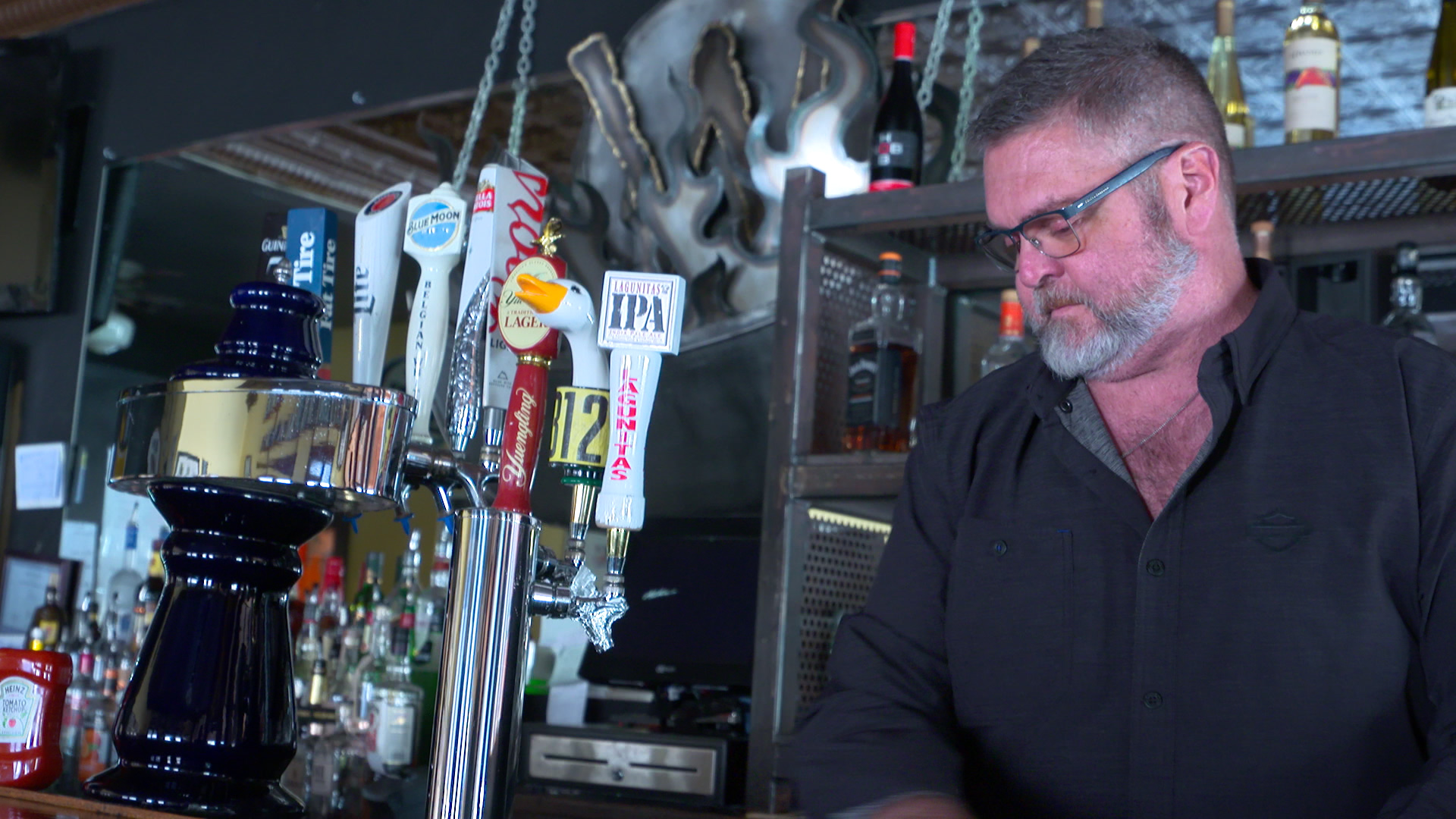
Dave Wagner cleans off the bar at his restaurant Wagner’s Ribs in Porter, Indiana. Wagner says he relies heavily on tourist dollars to keep his business going. (Alan Mbathi/IPB News)
“Everyone who works here supports themselves off the money they make in this building — the servers, the cooks, all of them,” he says. “Most of them, this is their main source of income and if we don’t get that summertime push, it will be — people will lose their jobs.”
Tourism here is closely tied to one of the most unique and sensitive ecosystems in the country. Indiana Dunes became one of the newest national parks last year.
Lorelei Weimer is the executive director of Indiana Dunes Tourism. She says the national park is what puts the region on the map — so if it gets hurt, nearby towns feel the impact. Weimer says its one of the most biodiverse parks in the country.
Watch this Great Lakes Now‘s segment on Indiana Dunes National Park:
API key not valid. Please pass a valid API key.“Because of these four climates that have come together,” she says. “So it’s a very sensitive area — and so it’s one that’s definitely worth fighting for and one worth protecting.”
The park’s chief of resource management, Dan Plath, says overall Indiana Dunes has been luckier than its neighbors. The park has only had to restrict access to two of its nine beaches due to the erosion.
But if the lake comes up, say, another five feet, he says that’s going to have a much bigger impact.
“We actually have endangered Pitcher’s thistle what lives up in the dunes and if it keeps going, we’re probably going to start getting into an area where we have an endangered species,” Plath says.
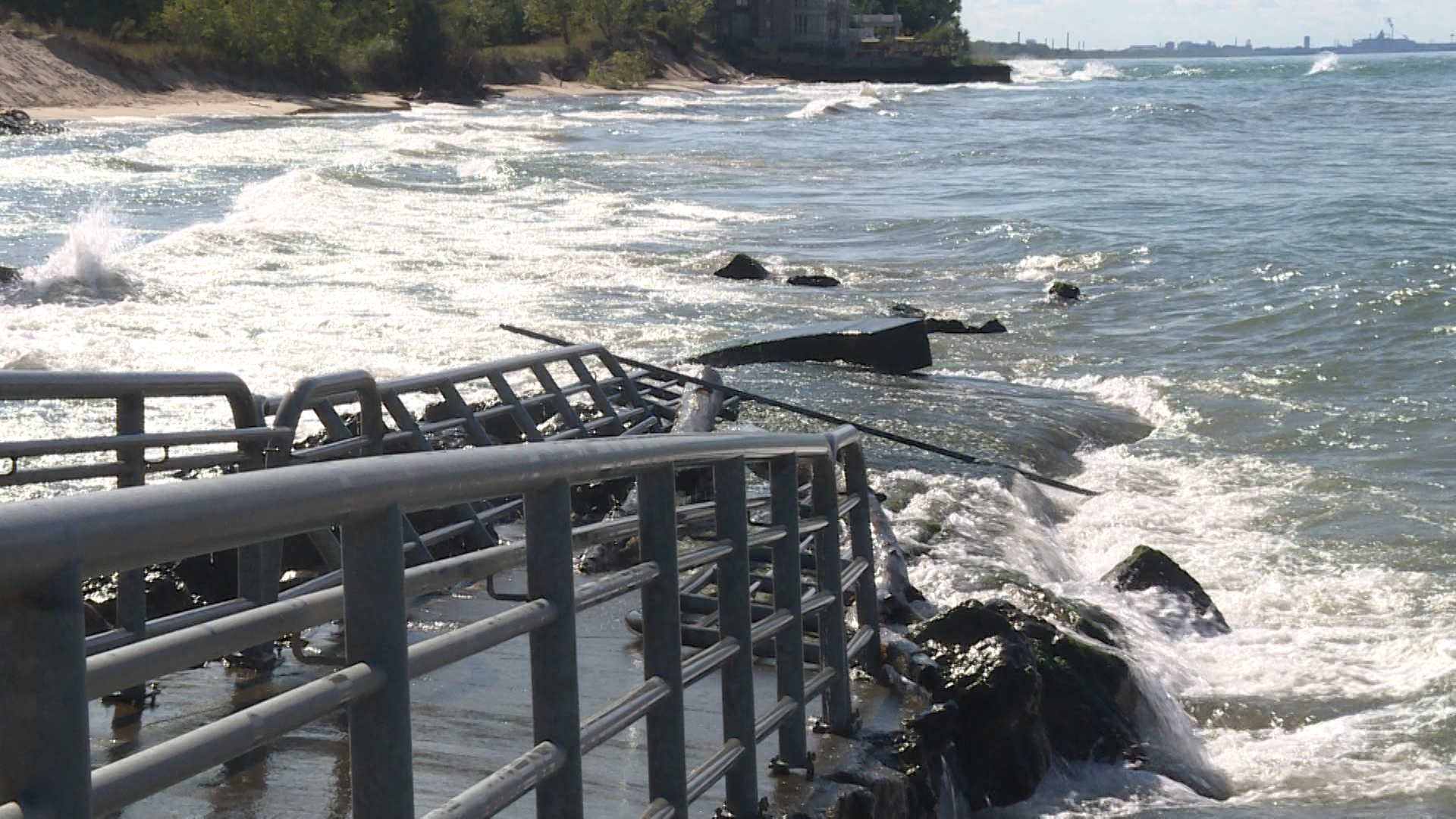
This sunken hundred foot walkway at Portage Lakefront & Riverwalk in Indiana Dunes National Park was built to help people with disabilities enjoy the lakeside view. Now, due to erosion, visitors can no longer use it. (Tyler Lake/WTIU)
Other damage is more visible. Erosion collapsed most of the hundred-foot walkway built so people with disabilities can enjoy the lakeside view.
Officials are trying to restore the park’s beaches, possibly by dumping sand on the beach or scaling back breakwaters so sand can naturally float to shore. Park Superintendent Paul Labovitz says they might even move buildings back from the lake.
“And we haven’t decided that yet, but we’re thinking that way,” he says. “We have to get away from Lake Michigan, building things close to the lake is not a good idea.”
Watch this Great Lakes Now‘s segment on high water levels:
API key not valid. Please pass a valid API key.Climate Change Causes Extreme Lake Levels And More Uncertainty
The question is, will the Great Lakes shoreline get a chance to heal? With climate change, it’s hard to say.
Cary Troy of Purdue University researches coastal engineering along Lake Michigan. He says climate change is creating extremes — very high lake levels in some years and very low levels in others.
According to the Environmental Protection Agency, the lakes are also expected to get more intense, frequent storms. Both trends are likely to make erosion worse.
“We know that rainfall is increasing over the Great Lakes. So that piece of the lake level budget is definitely increasing,” he says. “But as temperatures warm, there may be also a tendency for evaporation to increase — and that makes it very difficult to predict which effect is going to outweigh the other.”
So while we have high lake levels now, Troy says those levels could go down.
“But I will say that even though the water level can recover fairly quickly, the coastline cannot. The coastline will take a long time to kind of rebuild,” he says.
Looking To The State And The Country For Help
No less than five Indiana communities have made emergency declarations because of erosion.
One is Beverly Shores, where Schwab’s home is. The town has spent more than $300,000 to fix erosion damage. Town Council President Geof Benson says there’s no money left.
“We started a fundraiser to raise some funds and we’re looking at the possibility of going deeper in debt and refinancing and bonding some more money — because we’ve reached out to the county and they aren’t willing to give us any,” he says.
Schwab always planned to retire in the house and someday pass it on to her grandchildren.
“I’m not going to even think about this house falling into the lake — can’t go there. So we’ll hope for the best,” she says.
In January, two state legislators from the area urged Indiana’s governor to declare a statewide emergency. That would allow lakeshore communities to get federal funding to combat erosion.
Sen. Karen Tallian (D-Ogden Dunes) describes the letter she got in response:
“Which basically said, ‘Sorry, we can’t help you. There hasn’t been any destruction of infrastructure that would get us to an emergency declaration.’ And I called about it because I said,’ Hey, look, we’re trying to prevent destruction.’”
In February, Gov. Eric Holcomb issued an executive order to help gather information so that Indiana could declare an emergency if needed. But the state has yet to follow through with that declaration.
Vivek Rao of Indiana University’s Arnolt Center for Investigative Journalism contributed research and graphics.
Find out more in this behind-the-scenes interview with Rebecca Thiele:
API key not valid. Please pass a valid API key.“From Rust to Resilience: What climate change means for Great Lakes cities” is a collaborative reporting project that includes six members of the Institute for Nonprofit News (Belt Magazine, The Conversation, Ensia, Great Lakes Now at Detroit Public Television, MinnPost and Side Effects Public Media) as well as WUWM-FM Milwaukee, Indiana Public Broadcasting and The Water Main from American Public Media.
This project is part of the Pulitzer Center’s nationwide Connected Coastlines reporting initiative. For more information, go to pulitzercenter.org/connected-coastlines-initiative.

Read more on high water and shoreline erosion from Great Lakes Now:


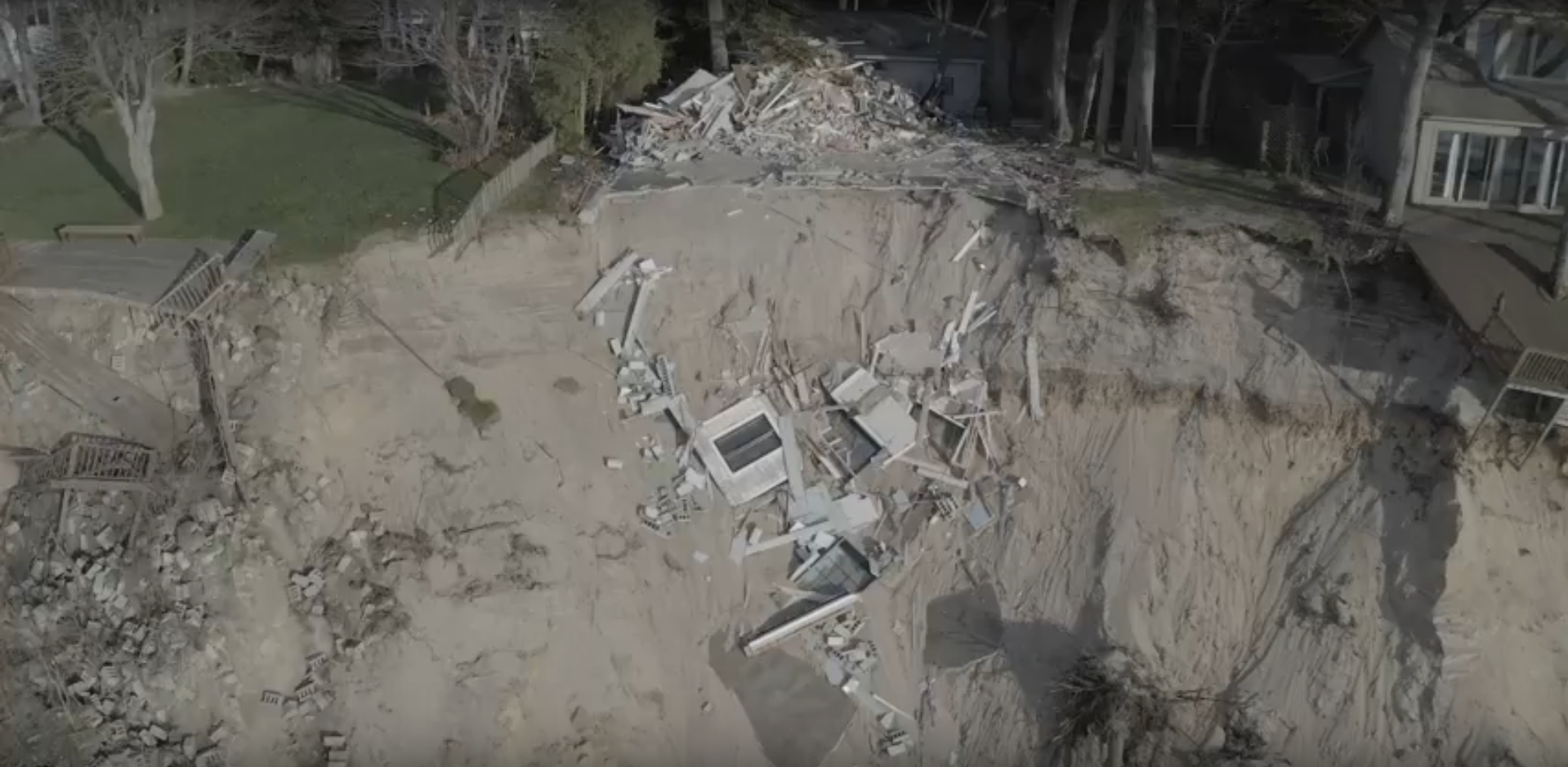
Featured image: Chicago native Nancy Schwab stands in front of a large scour that is threatening her vacation home in Beverly Shores, Indiana. (Alan Mbathi/IPB News)
2 Comments
-
Build or buy a house……
on a lakeshore or beachfront and not expect it to get flooded ??
in a forest and not expect fire ??
Whoever does such a thing because they love the setting, vacation etc, should weigh
the risks and benefits beforehand.
Hopefully, the affected insured have learned their lesson and hopefully the uninsured
are not expecting some financial compensation. -
We have had above average ice on the Great Lakes in four of the last seven winters: https://www.glerl.noaa.gov/data/ice/imgs/IceCover_avg_1973_2019.png




